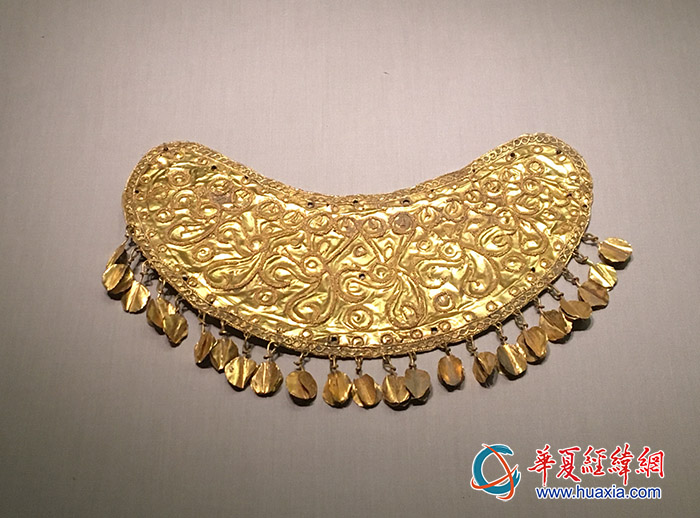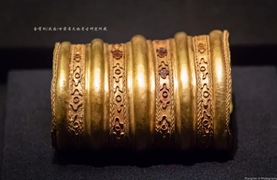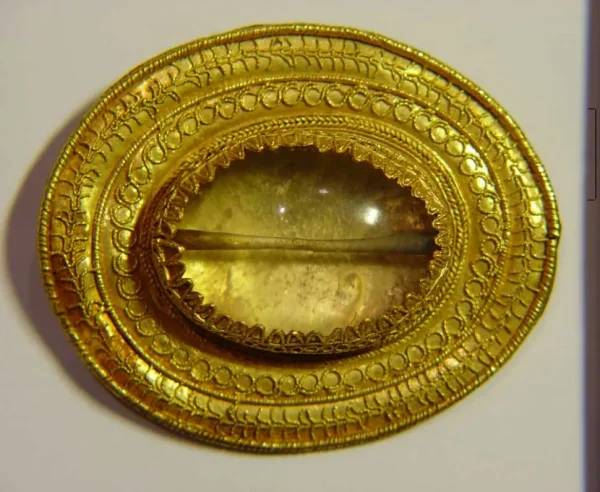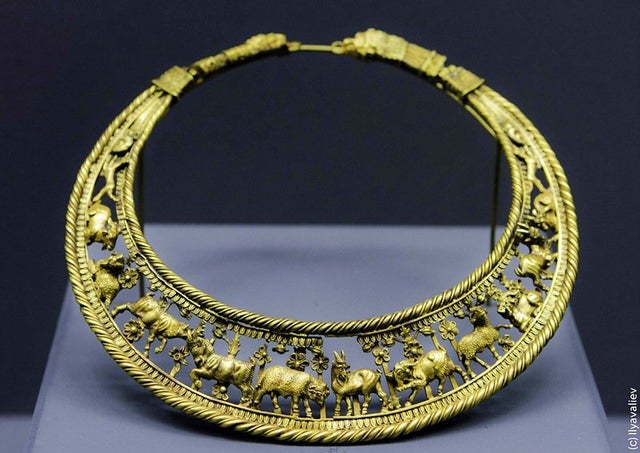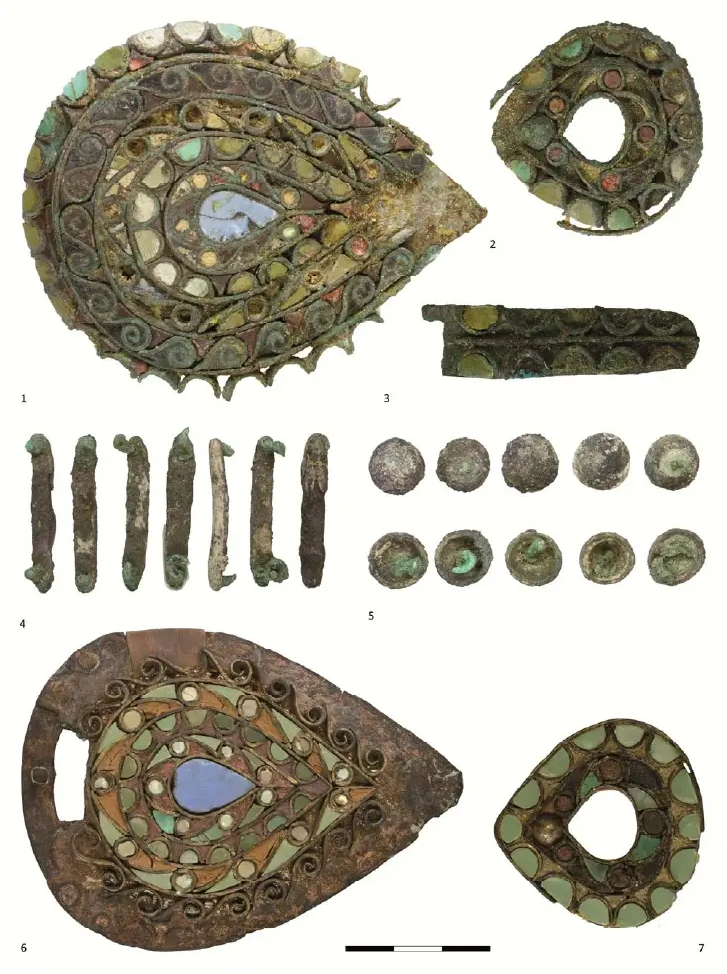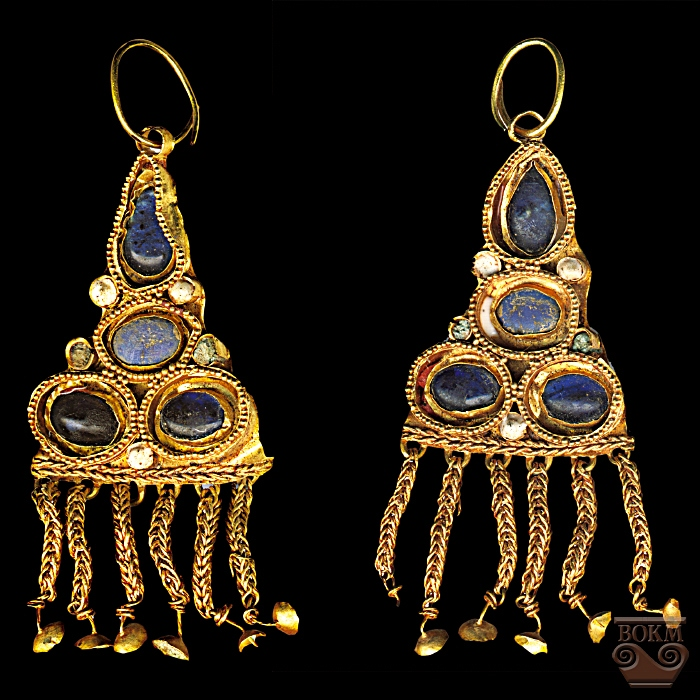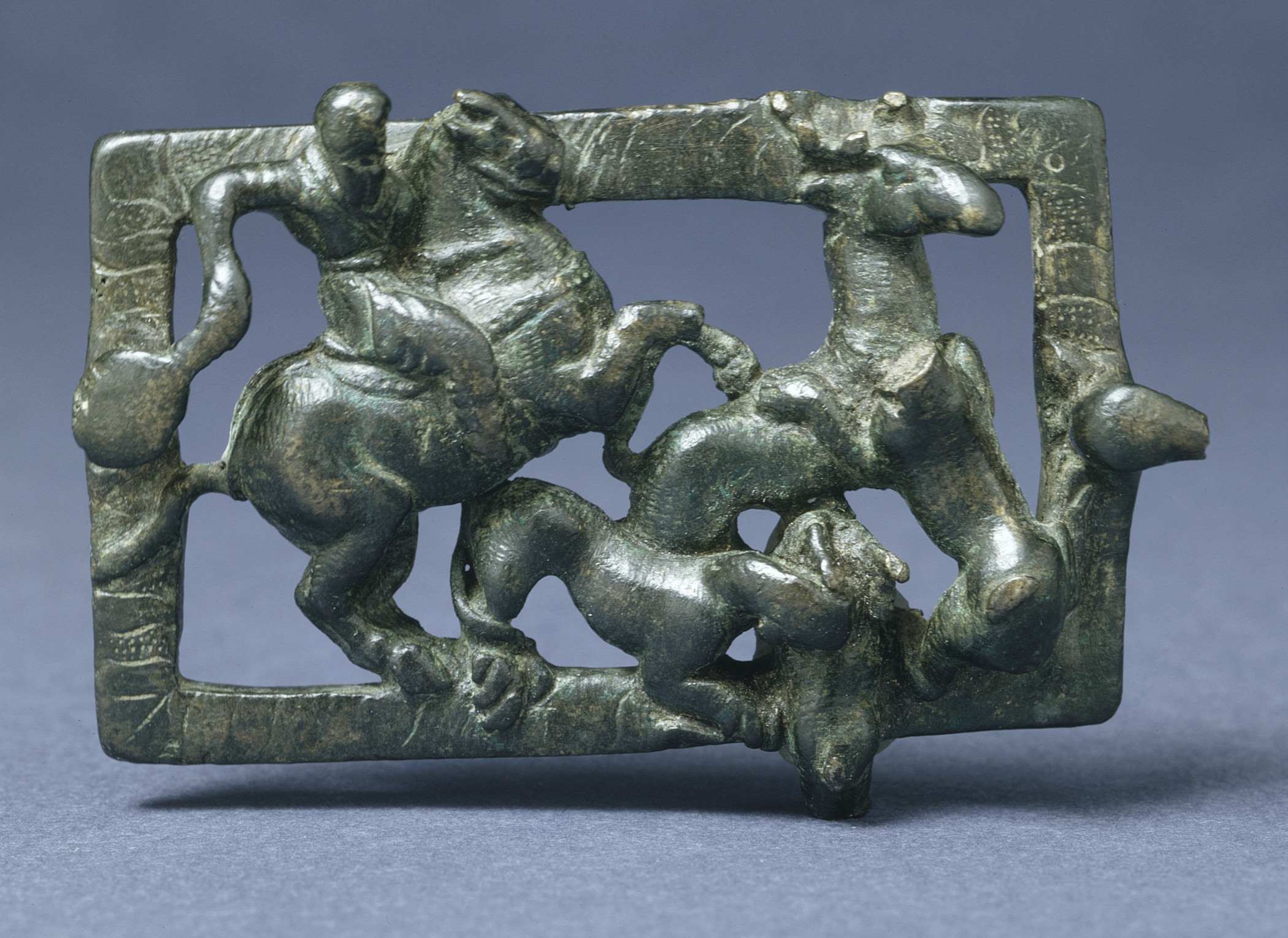Cicada-patterned gold ornament, [top width 4.6, bottom width 4, and height 5 cm] unearthed in 1985 from the tomb of the Eastern Jin Dynasty nobles at Xianheguan, Qixia District, Nanjing City, in the collection of the Six Dynasties Museum
The top is pointed and mountain-shaped. The theme decoration is a hollow-shaped cicada pattern, the wings of the cicada are stretched, the sides of the head are decorated with curly grass patterns, and the edges are decorated with zigzag patterns. Tiny gold grains are welded on the hollowed-out lines, and the inlays in the cicada’s eyes have fallen off.
For the cicada ornaments read an article by Sarah Laursen “Art and Technology in a Chinese Gold Cicada Plaque” https://www.academia.edu
Also:
RE-MAKING ANIMAL BODIES IN THE ARTS OF EARLY CHINA AND NORTH ASIA: PERSPECTIVES FROM THE STEPPE
PETYA ANDREEVA
https://www.academia.edu



https://art.icity.ly/events/hpqhd2b


Gold hair plaque or buyao, a dangling hairpin – a type of Chinese women’s hair ornament). The jewelry dangles when the wearer walks, hence the name, which literally means “shake as you go”.
Six Dynasties Period ( 220-589). Height: 20 cm, Width: 14 cm.
Gold crown ornament with antlers and ox head, or “Golden Step Hair Ornament with Bull’s Head and Antlers”, made in the shape of a fan, the outline of the head resembles that of a cow, inlaid with turquoise and brown and yellow material stones, and decorated with gold beads welded. The horns are in the shape of a branch of antler branches, the main root derives two roots, and then there are four branches upward, with peach-shaped gold leaves hanging on the top of each branch; the antlers and the peach-shaped gold leaves decorated with a pair of ears form a branch and leaf. The lush flowers and trees are very unique and peculiar in shape. In 1981, in Damao Banner, Ulanchabu League, Inner Mongolia, a similar golden crown ornament with bull’s head and antlers was unearthed from the tomb of the Northern Dynasty in Xihezi, and it is now in the collection of the Inner Mongolia Autonomous Region Museum. This kind of animal-shaped Jin Buyao is an exotic hair accessory for the northern Xianbei aristocratic ladies. As the backbone, add white beads, six auspicious beasts (bear, tiger, red scorpion, Tianlu, ward off evil, bison), as well as jade, gold chains, and pearls. Refer to Gu Kaizhi of the Eastern Jin Dynasty’s “Women’s History” to learn how to wear the ancient step.


Western Jin Dynasty (265-317 AD)
Length 19.5 cm, width 14.5 cm
Weighs 91.6 grams
Unearthed from the Xihezi cellar in Damao Banner, Baotou City, Inner Mongolia Autonomous Region in 1981
Collection of Inner Mongolia Museum
The head of the deer and the crown of the golden step are the decorations of the head in the shape of the head of the deer with the antlers. Bu Yaoguan arose in the Han Dynasty and became popular in Murong Xianbei after the Jin Dynasty.
Stepping, the blades sway and rustle as the wearer moves. Around the 1st century BC, Buyao was introduced to China from West Asia. It was combined with the Central Plains Han-style Buyao and became popular in the Wei and Jin Dynasties, especially in the Murong Xianbei tribe, and later spread to the Sui, Tang and Five Dynasties.
“Continued Han Shu Yufu Zhi” has this description: “Gold is the mountain inscription, and the white pearl is the Guizhi Xiangmiao. Around the jade is Huayun.”
“Mr. Sun Ji believes that the complete set of steps in the Eastern Han Dynasty may have been influenced by the Da Yuezhi. The Buyao decoration originated in the West, and the Buyao crown was officially formed around BC, and then spread eastward, across the Eurasian continent and into Japan through my country, and it has been popular in Japan for more than 600 years. At the same time, Mr. Sun Ji also pointed out that the Buyao and Buyao crown are used as women’s jewelry in my country, and the northern minority ruled areas during the Wei, Jin, Southern and Northern Dynasties and North Korea and Japan also include men wearing the Buyao crown.”


Yunyou MuseumGold Head Wear/ 266-316
Unearthed at Lamadong in Beipiao, Liaoning China/Liaoning Institute of Cultural Relics and Archaeology

Tiancaogou M1
- http://kougei-bunka.org/pdf/calture07/calture_07_10.pdf
- http://npokokusaibunnkazai.web.fc2.com/img/201907_Part3.pdf
- https://irdb.nii.ac.jp/01288/0000250815
- Sarah Laursen “Art and Technology in a Chinese Gold Cicada Plaque” in Archives of Asian Art 64.1 (2014): 43-57 https://www.academia.edu
- The Western Han Dynasty’s analysis of sheep-patterned gold ornaments
Author: Yu Guojiang, Yangzhou City Ruins Conservation Center
Originally published in: Northern Cultural Relics, No. 1, 2022
https://www.laitimes.com/en/article/3gqsy_3xfu6.html


